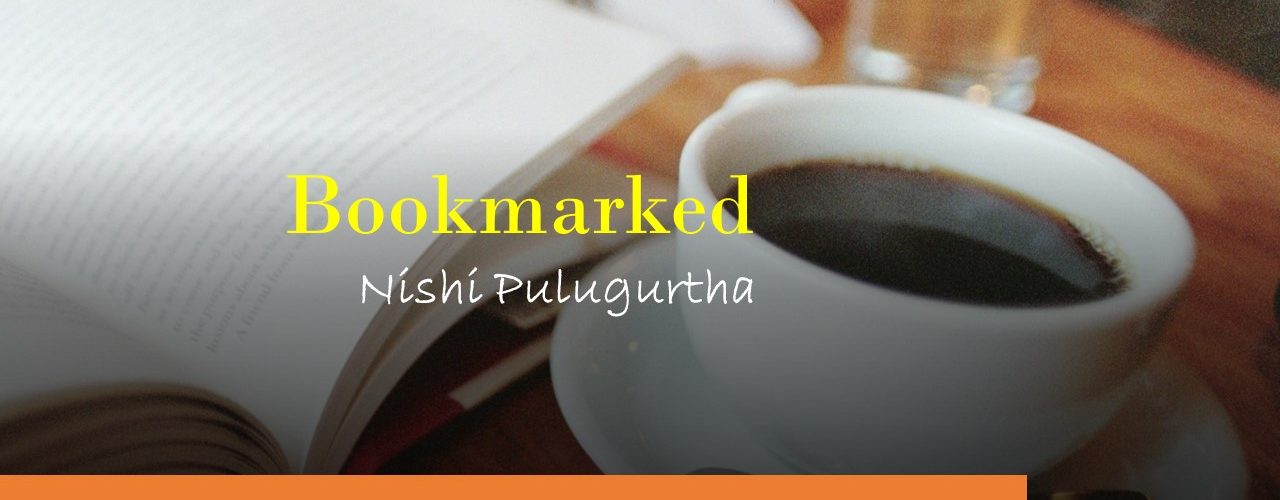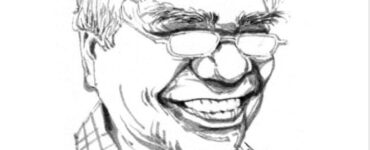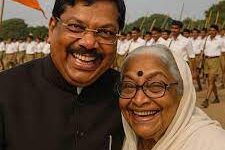I remember travelling 20/25 kms from one end of the city to the other to listen to Carnatic music recitals with Amma and Appagaru as a kid. The recitals or kacheris (as they were called) were not very frequent in Calcutta but when they happened Amma and Appagaru always made it a point to attend them. My sister and I would inevitably be part of the audience with them. On their trips down South my parents always returned with Carnatic music and devotional music cassettes that played at home regularly. My sister and I would hum and sing along, often saying the words wrongly, to be corrected by our parents. A couple of years ago I caught up one such fabulous recital by T.M. Krishna at Kala Mandir in Kolkata. Of the items that he performed was “brochevaarevarura”, a composition that has been with me for years now. I refer to this concert as the book that I talk about this time is Sebastian & Sons: A Brief History of Mrdangam Makers by T. M. Krishna.
A fascinating account of caste in Carnatic music, Sebastian & Sons: A Brief History of Mrdangam Makers speaks of the mrdangam, an instrument that is an integral part of any Carnatic music performance. The book traces the history of the mrdangam in Thanjavur which was the centre of Carnatic music and Chennai which later on became the centre of the world of Carnatic music. Krishna wonderfully brings in geographical space and location while talking of the origins and history of the instrument. Space, the book shows, is an important part of the aspect of the lived lives of these craftsmen – their lived spaces and their work area as well with caste figuring importantly there too The musicians who play the instrument, Krishna notes, are predominantly upper caste Brahmins while the mrdangam makers have mostly been Dalits –
“Mrdangam-making involves skinning, cutting and curing hides, and hence this work was almost never done by the mrdangam artists. In the established caste order, skin-work has always been allotted to the lowest of castes.
The book recounts the stories of families that were involved in making mrdangams. Of the many engaged in this craft was Sebastian (Sevittian) and his three sons, Shengol, Parlandu and Antony.
Caste is deeply entrenched in the social fabric of India, in every aspect of social life, in our words and thoughts, in ways that we fail to acknowledge. The instrument would be used but the maker had to keep his distance. Krishna refers to Selvaraj, Parlandu’s son speaking of his father at work –
‘When my father worked for Thanjavur Vaidyanatha Ayyar, he would stand at the entrance. T. K. Murthy would keep all the mrdangams that need to be worked on outside. He would work outside or tie the mrdangam in a piece of cloth and bring it home.’
Sebastian & Sons takes the reader through the lanes and bylanes of Naganallur, along Keethukara Street in Thanjavur, in search of the master craftsmen who lived and worked and those who still do. As I move along the pages learning about the origin of the modern day mrdangam, its origins, the finer nuances of the hides needed, of the wood work that went into the making, the book takes me into the debates about tonal and aesthetic purity and importance to stories of mrdangam makers from other southern states of Andhra Pradesh and Kerala as well, to the very few women in the area, I realize how at each and every point the spectre of caste pervades. The stories and anecdotes reveal the complex web of caste, of caste based hierarchy and discrimination. Gender too comes in these accounts –
Mrdangam-making too has always been a male-controlled territory. Women have always provided assistance in this home-based industry, but they are rarely spoken of. . . . there is a generally accepted notion that mrdangam making is too difficult for womankind, especially the skin-related stuff.
Krishna goes on to refer to Madhammal who played a big role in supplying hides for years, to Ashwathamma and Geetha who worked at the craft.
Working through caste, gender, religion, culture and language, the book takes us through a complex world of Carnatic music with the author describing in detail the process by which skin and wood is worked upon to create an instrument that is played on. Using anecdotes, reminiscences and stories, the book presents a tale of discrimination and oppression, about the “their lives, struggles or indeed, their creativity and workmanship” of people whose lives were kept away from the mainstream because of their caste, yet people without whose work, Carnatic music would remain incomplete. As Krishna writes, “Little did I realise then that this was going to be a far more complex and messy investigation that I had envisaged.”
*









It’s a beautiful book. Nobody ever undertook such a deep study of the history of mrudangam making.
This article touched deep within a space of mixed feelings of various things considered divine but hand made by men and women with their faces always covered. Many thanks.
మృదంగం తయారు చేసి నిపుణుల గురించిన వ్యాసం చదివాను.ఆసక్తితో చదివాను.వినడమే గాని కర్ణాటక శాస్త్రీయ సంగీతంలో ప్రవేశం లేదు.ఆ కుటుంబ నేపథ్యమూ లేదు.కాని–మాటకు మాట చెప్పుకోవాలే గాని అకుంఠిత దీక్షతో వినేవాణ్ణి;ముఖ్యంగా సంగీత ముమ్మార్తుల పైన అభిమానంతో భక్తితో-ఎక్కడని–ఎప్చుడని–చెన్నప్పట్నంలో–మా స్వంతూరు విజయనగరమైనా ఉద్యోగరీత్యా చెన్నప్పట్నంలోనే స్థిరపడ్డాను.(అప్పటి రోజుల్లో చెన్నప్పట్నంలో తెలుగు వాతావరణం బాగానే వెళ్ళి విరిసేది.టి కే మూర్తిగారు-దొరై గారు-కారైకుడి మణియన్-తిరువారూర్ భక్త వత్సలం వంటి హేమహేమీల మృదంగ కచ్చేరీలు హాయరయి ఉన్నాను.త్యాగరాజు స్వామి వారిపట్ల అక్కడి వాళ్ళ భక్తి ప్రపత్తులకు ఆనందంతో ఆశ్యర్యపోయేవాణ్ణి.చివరి విడతగా గుజరాత్ నుండి భాగ్యనగరం చేరిన తరవాత యిక్కడే ఉద్యోగ విరమణ చేసాను.ఇక్కడ కూడ సంగీత సభలో సభ్యుడిగా చేరి చాలా రోజులుగా సంగీత కచ్చేరీలు హాజరయే వాణ్ణి.అక్కడా యిక్కడా యెల్లా వేంకటేశ్వర రావు గారి మృదంగ విన్యాసం చాలా ప్రసిధ్ధి.అప్పటి సుమధుర జ్ఞాపకాలను మనసున గాలి వీచికల్లా కదలింప చేసిన రచయిత్రకు అభినందలు
Thank you